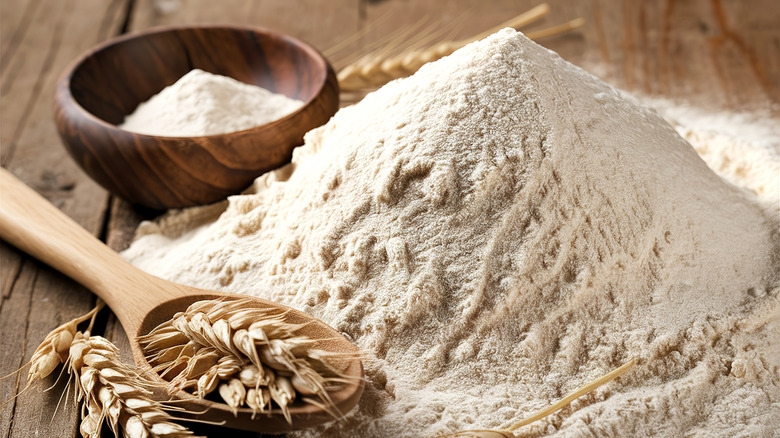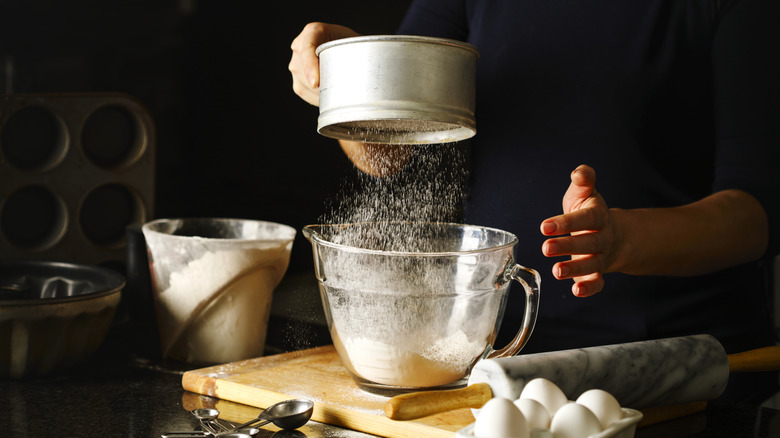Bread Flour Vs All-Purpose Flour: What's The Difference?
As opposed to just throwing different ingredients into a pan and seeing what tastes good, baking is an exact science requiring specific ratios and measurements to ensure that your food comes out correctly. That is why you have to be extra careful when picking up flour at the grocery store; Along with deciphering whole-wheat versus white whole-wheat flour, or choosing between brands, you do not want to accidentally pick up a bag of bread flour when you need all-purpose flour, or vice versa.
Different types of flour contain varying amounts of gluten — the protein in found in wheat, rye, and barley, for example — and each type has its own specific uses in the kitchen. Bread flour contains a higher amount of protein to lend a hearty chew, which is great for bread but not so great for things like cakes and cookies that you want to be more tender. It might not seem like a big deal, but using the wrong flour in your baking can completely throw off the texture of the finished product.
Which type of flour should you use?
Unless you're picking up the flour you need for a gluten-free pie crust, the most common type of flour you will come across is all-purpose flour. It will often be marked on a recipe, but you can assume you'll be using all-purpose flour if there is no specification. Two types of wheat — hard wheat with a higher natural protein content, and soft wheat with a lower protein content — are blended together for all-purpose flour, in a ratio that measures between 9% to 12% protein. All-purpose flour is often used for sweet baked goods like cookies, cakes, and brownies. But it can also be used for breading foods to be fried, or for thickening sauces in a roux.
Bread flour is made of milled hard wheat and has a protein content of around 12% to 15%. The proteins, or gluten, are vital for structure, so bread flour is commonly used in yeasted bread recipes to lend that toothsome chewiness. Still, while the extra protein is necessary for bread baking, it can make your desserts unappetizingly chewy and dense if you are not careful.
For the pastry chefs in the kitchen, one last blend is cake flour with a lower protein content of roughly 7% to 8%, designed for perfectly tender and light angel food cake and other baked goods where a minimal amount of gluten is needed. Once you're using the right flour for your recipe, the rest is a piece of (literal) cake. (Bonus points if it's ultra-tender chocolate cake with sauerkraut.)

